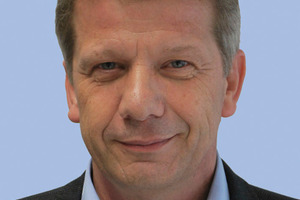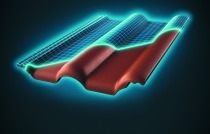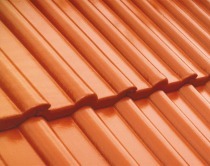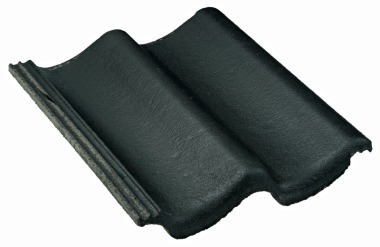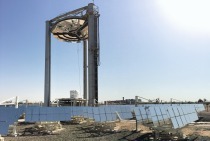Hybrid roof and façade elements as low-exergy components in climate-neutral building and community concepts
As part of two BMWI joint research projects [1,2], in conjunction with RWTH Aachen University and the partner companies, Autarq and noventec, it was possible to develop a hybrid concrete roof tile using a high-performance fine-aggregate concrete, to manufacture a prototype of the same and to provide samples. Apart from the usual functions of a roof tile, the innovative concrete roof tile enables generating solar electric energy as well as solar thermal energy. To realize a corrugated roof tile for the historical buildings of the so-called Garden City, while respecting the listed status, as well as to match the color shade and the shape of the clay tiles with curved S-shaped profiles which are usually used for renovation was the particularly challenging part of the “Energy-efficient heritage district Margarethenhöhe Essen” joint research project [2]. In addition to that, for the Margarethe Krupp Foundation for Housing Assistance, it had to be ensured that the solar electric and solar thermal activation and the supply structure required for this purpose could feasibly be installed at the building by the roofing contractor so that the existing roof did not need any structural strengthening because of the installation of the hybrid roof tiles. As a consequence, the overall weight of the roof tile realized with the high-performance fine-aggregate concrete together with the integrated elements should not exceed those of the original clay tile.
Within the project, the hybrid concrete roof tile plays a key role regarding the overall energetic concept of the buildings and the community. Because all appropriate roof surfaces of the 800 buildings of the housing estate equipped with PV can be used for the generation and incorporation of renewable energies. Otherwise, the solar thermal energy generated by the hybrid roof tiles above all during warmer weather periods allows for a recuperation of the ground, serving as energy source during the heating period, while the thermal heat is generated by means of geothermal probes and heat pumps in an environmentally friendly way. The extraction of heat from the roof tiles in summer, moreover, improves the efficiency of the frameless solar panels considerably. After successful sampling at the heritage preservation office in autumn 2019 [3], the first five demonstration buildings will have been energy-optimized and modernized by August 2020, using the measures for listed buildings that were worked out within the project. The concept, the design, the production and the functionality of the hybrid concrete roof tiles will be presented in the lecture. In addition, the energy-efficient building and community concept [4] will be outlined as well as the outlook for the transfer of findings to small-sized façade elements as architectural components.
Acknowledgement
The authors are grateful to the German Federal Ministry for Economic Affairs and Energy for the financial support of the two joint projects relevant to the development of the hybrid concrete roof tiles as well as Project Management Jülich (PtJ) for the ever expert support and assistance in administrative issues. Our special thanks go to all project partners, including “Margarethe Krupp Foundation for Housing Assistance”, the two chairs “Integrated Analog Circuits” and “Energy Efficient Buildings and Indoor Climate” at RWTH Aachen University, the “Gas and Heating Institute Essen e.V.” as well as the two company partners “Autarq GmbH & Co. KG” and “noventec GmbH”, which both making an important contribution to the successful development of the hybrid concrete roof tile – Autarq for the electrical and noventec for the solar thermal activation of the roof tile –, and beyond the demonstration buildings, they want to make the new innovative concrete element ready for the market. At IWB, we would like to thank the employees Christiane Ditzen, Simone Reeb and Lena Teichmann as well as Dr. Christian Baumert, Luka Laskovic, Christian Blatt, Zaher Ramadan and Wladimir Lisin, who are working with extraordinary dedication for the development of the roof tile and its integration into the energy-efficient building and community concept as well as for the forthcoming implementation, thus pushing the project successfully.

